
Everywhere you look these days you’ll find products that are made of Aloe Vera in part.
That may come off as a bit dramatic but the point is there are tons and tons of creams, hair care and even injury medicines made with Aloe Vera.
Many look at it as another basic plant but it is much more than that.
Most people probably look at it as just another plant but since it has so many different applications it leads to extreme demand in the commercial world.
Every year the demand rises due to the ever increasing health craze in our society.
I’m sure you know at least one person that refuses to use skin care or hair products that aren’t organic and naturally made. People are chemical averse these days and with good reason.
High demand is always followed by enormous profit potentials for companies.
As an existing or aspiring entrepreneur, if that doesn’t light you up then I don’t know what will. The most successful entrepreneurs in the world have reached their level of success because they saw an opportunity and ran with it.
I did the exact same thing when I came across local lead gen. I spoke to a guy, who became my mentor, and that was enough for me. I saw the potential in helping business owners reach their dreams and in turn I realized mine.
It’s possible you’ve never heard of it so let me give you a real simple breakdown…
Build a website, rank it to the top spot in Google, collect leads, send them to the business owner for compensation.
The best part about it is I can do this as much as I’d like and continue to increase my monthly income.
Each business owner I work with increases my passive income by $650-$2,000 every month so I continue to build these assets every single month.
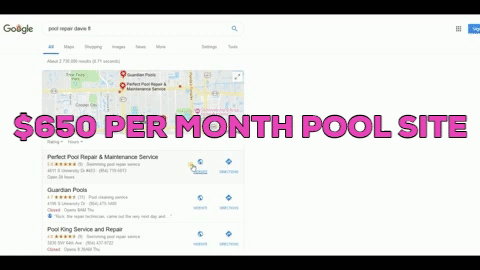
The beautiful thing about our lead gen program is that it’s designed for online marketing veterans and complete beginners alike.
The life-changing passive income I’ve been able to generate is thanks to my mentor, Dan. He also runs this program so all of our students get the chance to work closely with him.
Maybe you like the way it sounds, you can click here if you wanna get a better look.
Getting back to the aloe vera business… honestly, if you’re ever going to get into the aloe farming biz then it needs to be right now because you’ll never find a better time to cash in.
It won’t be easy though.
Obviously it’s just like any other business you start in the sense that it will require a ton of work and commitment. And it must be continuous, you won’t find riches overnight.
Also, you have to take into consideration the difficulties that come with the general farming business, let alone aloe. If you have any farming experience then you’ll already have an advantage in the business knowing some of the challenges that are ahead.
That said, regardless of your experience level in the industry if you open your new business with a golden mindset then think of all the money to be made in this ever growing industry!
If you’re going in with that then the last thing you need is a dynamite biz plan.
Would you look at that, it’s your lucky day. I’ve taken some time to develop a potential strategy that you could begin putting in place today.
This plan has taken a lot of time to create and it’s rock solid. If you decide to put this into action there’s no doubt in my mind that you could start your own aloe farming company right now.
Time to get into it!
Plant Selection
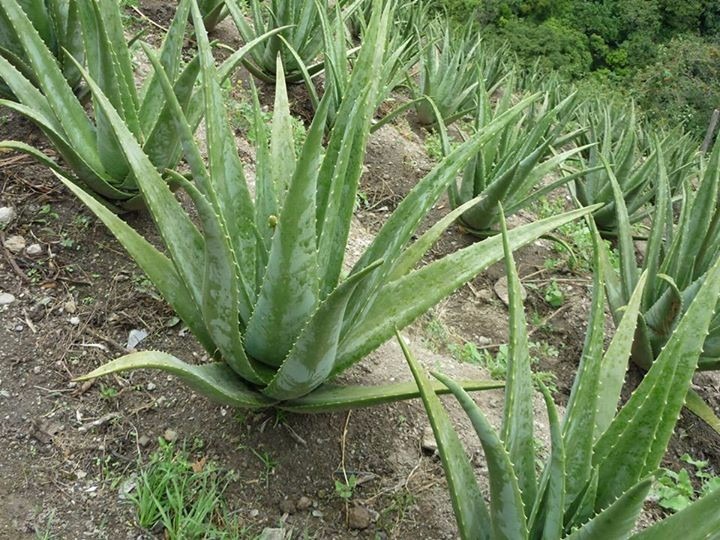
The aloe plant is just like most plants, there’s the type that people associate with “aloe” and then there are tons of other types out there.
With various options comes pros and cons of growing each for commercial purposes.
The good news for anyone in the aloe farming business is the aloe plant is known for a high growth rate as well as being a hardy plant.
These are just a few of the types that you need to keep in mind:
Aloe Barbadensis Miller
This is the one that you think of when you hear the words Aloe Vera. It’s the picture that you’ll see on cream bottles and the plant you’ll most likely see at your local gardening center.
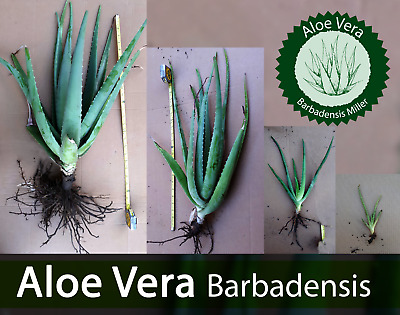
It’s also the popular pick as best to grow for commercial purposes. Barbadensis possesses the highest healing potential and is also a popular choice in beauty products.
Aloe Saponaria
This is absolutely the most eye-pleasing version on our list. It generates a massive amount of aloe juice which makes it a popular choice for cosmetic use.
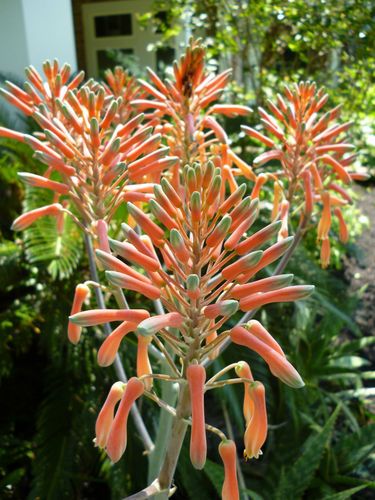
It’s important to point out that you should plan to farm this strain outdoors as opposed to inside.
Aloe Aborescens
This strain shows it’s value with it’s appealing effects with cancer symptoms for chemo patients.
That’s a huge perk but it’s not the best option for commercial use because it doesn’t produce as much as the other two options we’ve discussed.
Upfront Cost Required To Start Your Aloe Farming Business
This business is a lot different than most business models we talk about on this blog. When you’re talking about a farm, obviously you’ll need a massive piece of land to be able to maximize profit potential and generate enough supply for commercial purpose.
When you’re talking about purchasing land things get expensive, we both know that.
And the land needs to be somewhat flat and clear of trees or other potential obstacles. Maybe you find a good deal on a piece of property but then you add in the cost of clearing it and you’re paying more than you can handle anyway.
The good thing about farming though is you’re likely to be eligible for a loan to start your business. In addition, government entities like giving out money for farming.
You might even be able to get money off if you qualify for government grants.
Maybe you’re fortunate enough to be in a position where you have the finances to purchases a large piece of land but you can still take the opportunity to benefit from what the government is willing to give you.
Climate Requirements For Optimal Aloe Vera Farming
Just like many plants, aloe has a preferred climate in which it grows in. You might reside in an area where you won’t have the ability to grow it at all.
This could be the one aspect of the business that holds you back from cashing in on this opportunity.
Aloe doesn’t like much moisture, that means if you live an area of the world in which you even get a moderate amount of precipitation you’re probably out of luck.
Not saying it can’t rain at all but it can’t be much. Humidity also creates moisture but it can be okay as long as it doesn’t come with a ton of rain.
This includes any type of precipitation including snow or ice. Aloe will die very quickly in cold climates. That includes areas that only drop below freezing at night time.
Maybe you’re thinking that you can get around this by farming it indoors using a ridiculous amount of lighting and hydroponics. You might be right in some cases but in this post we’re sticking with the old school way of farming.
Finding The Right Piece of Land
Maybe the biggest plus when searching for land to farm aloe is the fact that it doesn’t take that much space to grow it. If you could get your hands on roughly 2 acres of land you’d be find and you can grow as you need to.
The ideal soil for aloe growth is sandy or loamy soil. If you can’t get your hands on enough of it then you’ll also see sufficient growth using normal soil you can find at a garden center.
As we talked about before, aloe doesn’t do too hot in moist environments so a solid drainage system is paramount.
Aloe plants are super versatile which makes them very durable plants. It’s not easy to kill them. They aren’t affected by many things that other plants are such as pH levels.
Most plants would die off almost instantly with pH levels of 8.5 but not the aloe plant.
Plus Aloe Vera can tolerate elements in soil that most other plants are harmed by such as salts and potassium.
It’s important to know how to and be ready to test for these elements in the soil you’re using. Don’t worry there are and abundance of test kits out there that you can employ for this.
That said, it might be smart to just get a sample sent out to a test lab so you can make sure you’re using a high quality soil that will deliver big results.
You shouldn’t have much of a problem finding a place to test it because it’s a common practice for general farmers as well meaning there’s a huge need for the testing.
You can have this done prior to purchasing the plot of land. The person you’re buying from should be willing to provide you with a sample. If not then you could probably take that as a red flag.
You might even be able to get the seller to pick up the bill for the sample if they’re really trying to sell.
While the soil is very important in any type of farming, your main concern with aloe farming should be your drainage system. You don’t want your plants soaking up too much moisture from the soil because it will lead to less production due to less leaves being produced from each plant.
You could even avoid this by simply laying down a bit of coarse soil for the plants to grow on.
That’s only one of many ways to tackle the issue though.
Keep in mind the differentiation of terrain levels on the plot of land. If it’s filled with slopes and hills it might not be a good option because when it rains the water will run down the slope and collect one a certain patch of plants.
You don’t want to have a significant amount of your plants suffering from the ill effects of excess water.
There are so many ways to deal with the potential problems in this business making it a fantastic choice for starting a business.
That said, I’d rather stick with my own business in local lead gen. The opportunity for growth is so large and I have the ability to make a positive impact on people’s lives.
The profit margins are so large because everything is operated in the digital space. Little to no overhead cost and almost zero recurring costs. All while increasing income consistently.
I don’t have to worry about buying land or seeds or having soil tested. I need a computer and a decent internet connection and that’s it.
All of my websites bring in passive income for me monthly. After they’re built and ranked I don’t have to touch them and they continue to produce.
My ideal life has always been to make more money while putting in less work and I know many people share that belief with me.
If it sounds like you then you could always learn more about our program.
It will teach you the exact same skills that I learned a few years ago and allowed me to start making tens of thousands a month in passive income.
Prepping Your Land For Aloe Plants
Great, you’ve scored a sweet piece of land to start farming your aloe plants!
We’ve gone over some really important steps thus far but there’s a huge task that still lies ahead of you.
Land preparation.
With this comes the important step of plowing your land. Any farming vet will be the first to tell you just how important this is.
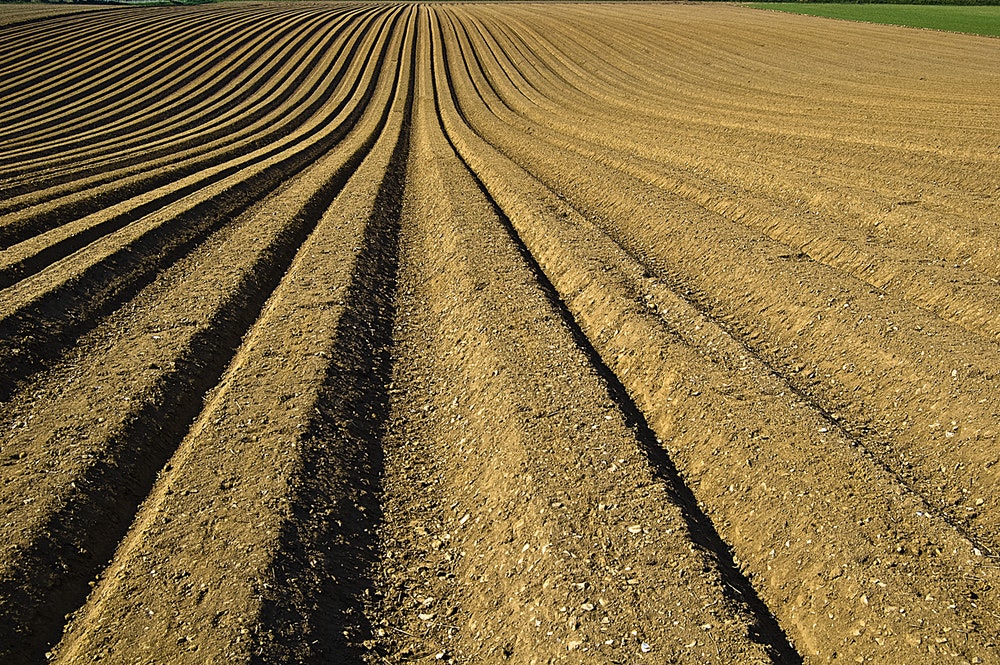
It’s going to require a ton of physical labor and time on your end. There’s always the option of doing it by hand but let’s be honest, when you’re working with multiple acres that’s going to take a shit load of time.
You could absolutely make a long-term investment and get yourself a tractor. There are other great powered tools out there though that are much like a lawn mower. That could be a great purchase if you’re just getting into farming for the first time.
When you’ve plowed every inch of your land you should see soil with fine granules and distinct rows throughout your fields. The distinct rows will be a huge help when you finally begin seeding your field.
If you took the opportunity to get the soil tested before purchase then you can skip this next part. But if you haven’t then you need to be doing pH tests right now.
You’re at the point now where you can begin thinking about fertilization.
You can choose your fertilizer products based on how much money you have to spend. If you’re on a tight budget then you can consider a normal composting solution. If you’ve got a larger budget then there a ton of more complex and dynamic fertilizing products.
There are a couple things to remember when it comes to deciding on a fertilizer. The first is that you’ll have to apply it fresh every single year so remember that when you’re considering the cost of the type you go with.
The second piggybacks off the first, you’ll want to be consistent with the fertilizer that you use every year. That means do your research, pick one and do your best to stick with it year after year.
The next step is figuring out how you’re going to irrigate your crops and we both know how important this is with any plant
There are many great options out there for you to automate this process.
The aloe plant can be a bit difficult when it comes to irrigation because we’ve already gone over how taking in too much moisture can have negative affects on your crops.
With that said, these plants need to be given water continuously. You’ll need to figure out how to walk that fine line.
Having an automated way of doing it is a great way to be consistent and these plants will do just fine with consistent light misting.
Yes the costs of the business are starting to add up, especially when automating the watering process but it’s one of the best investments you can make. It keeps the process consistent and it’s easy to make adjustments.
Be aware of the climate you’re in because if it’s super hot and dry you’ll need to be misting the plants more often. Awareness will be key here.
The Aloe Vera Plant & Propogation
So we’ve finally arrived at the point we can begin talking about the plant itself.
We’ll answer some general questions that I’m sure you’re curious about right now.
Obviously the first thing you’ll need to figure out is how you’ll be acquiring your first aloe plants. Like any other plant there’s two options here.
Growing from seeds or purchasing cuttings (AKA baby aloe plants).
Beginning with seeds is absolutely the most cost effective option but it also increases the total time needed from the initial planting to harvesting as well as the overall difficulty for a beginner.
Aloe seeds, much like other plants nowadays, are easily purchased online or you can buy them off a farmer near you. Once you’re growing a steady amount of aloe plants you’ll be able to pull new seeds straight from your existing plants.
If you decide to go the route of cuttings you can simply place them into your soil generally. And you’ll be harvesting your first round of plants much sooner than if you start with seeds.
If you’re in a bit of a rush to harvest your first set of crops then seeds probably aren’t the best idea as it can take a handful of weeks just for them to sprout from the ground.
Your initial goal should be to grow a full field of aloe plants so you can eventually make the growing process a lot simpler. You can eventually pull fresh aloe seeds from your own plants and it’ll be a lot easier transition from harvest to harvest.
Either that or you could take clips or cuttings from your own aloe plants to expedite the process. Once you get some experience you’ll be able to develop your own process and maybe you decide to go with a combination of cuttings and seeds.
How do you take cuttings from your own crops? Let’s get this figured out since it’s a question you’ll probably have in the future.
You have to located “rhizomes” or “pups” on your plants. They’re pieces that grow outside the normal pattern of growth. Do some research on the recommended size of these pieces before cutting. Once they’ve reached it you can simply remove it with a clean knife.
In an ideal situation you’d like to keep some of the roots from these offshoots.
Next, simply replant the offshoot in it’s own pot or homemade container and wait for it to grow it’s own root system. This process should only take a week roughly.
Obviously at that point it’s ready to be watered. As it grows keep measuring it and when it gets to the required size, you can transplant it alongside your other plants.
At the end of the day this whole process is rather easy. You just need to pick and method and run with it, tweak it as you go and develop what works best for you over time.
You’ll figure out what allows you to be most efficient while producing maximum amounts of aloe.
This is the most important part of the business for you to master. If you struggle here, don’t give up just keep working and tweaking your strategy.
The other important thing to consider when planting Aloe Vera is knowing when to do it. Well, aloe is just like many other plants out there. You need to do your planting or seeding after the wettest part of the year.
Protecting The Aloe Plants
If you know anything about farming or even gardening in your own backyard, you know that as soon as plants go in the ground they become a potential food source for animals and insects.
In addition, fungal diseases can run rampant in your plants. These can spread through a plant like wildfire so be sure to keep your awareness up for these.
If you do identify a fungal disease then be sure to remove that plant and keep it separate from your other ones. It may not be necessary if the disease is still early on but the last thing you want is the disease spreading throughout your entire field of crops.
Once you’ve gotten rid of the fungal disease the plant can then be planted back alongside the others.
It’ll take some experience in the farming industry but eventually you’ll be able to identify and differentiate insect marks on leaves, evidence of animals or fungal disease a lot more easily.
Plus you’ll have more experience so you’ll immediately know how to handle any situation.
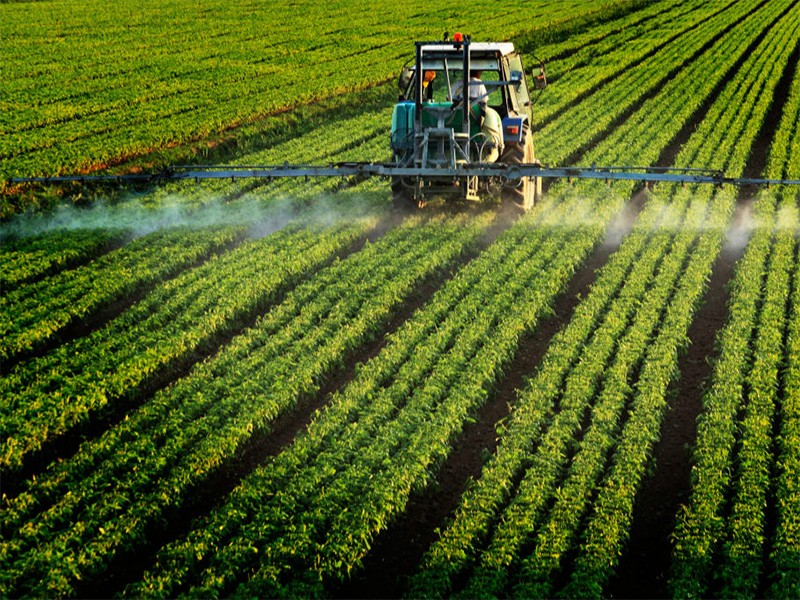
Of course pesticides are always an option in the industry.
Of course, keep in mind that the reason most people use Aloe Vera based products are for natural effects and organic growth.
The use of pesticides is kind of a problem in that sense. Depending on who you’re selling to, using these chemicals could make it much harder to find buyers for your plants.
There are more natural pesticide options out there if you’re worried about buyers being turned off by chemicals.
Weeds can be another animal.
You won’t have to deal with them much in your first year of farming but as the years go by they start growing like hell.
Thankfully it isn’t that challenging to deal with them but it will take up a lot of your time and also a ton of work.
You can absolutely invest in equipment that will make the process a lot more efficient after your first harvest. This will likely depend on how much land you’re planting on.
Another thing you’ll have to keep an eye on is aeration. Making sure the soil constantly has access to oxygen. Luckily all you have to do for this is take a rake or another tool and stir up the top surface of the soil.
It doesn’t have to be done daily but make sure you’re taking care of it here and there.
Harvest Process
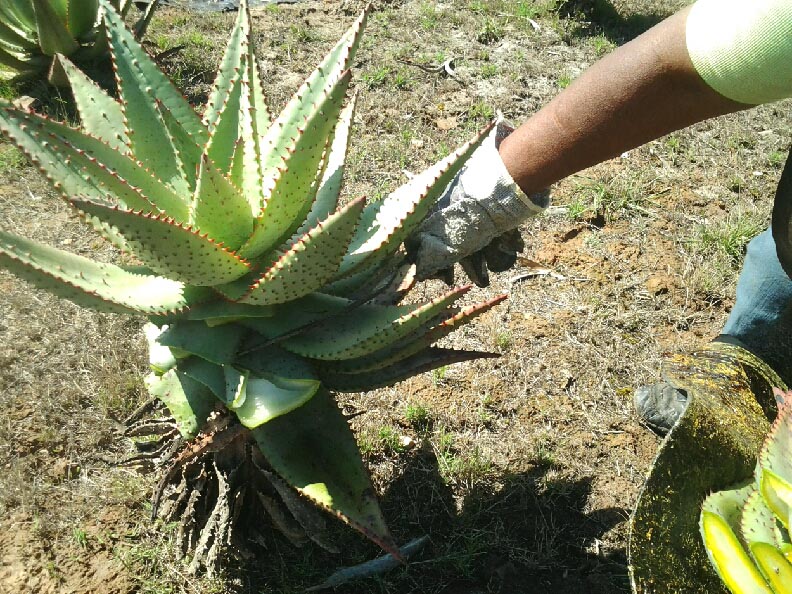
This is the part that gets the adrenaline pumpin for most farmers. We’ve made it through the entire process and now we’re about ready to cash in on the fruits of our labor.
But take a step back and stay focused because this is one of the most challenging and time consuming parts of the entire process.
It’s similar to other crops with a pretty lengthy grow period of roughly 8 months.
I said roughly because plants don’t always go by the book. It’s not black and white in every case. Stay aware of how you’re plants are doing and where they’re at in the process throughout.
You might need to harvest a little early or maybe a little bit late. It’s possible that the weather in your area that summer affected how your aloe was growing and you need to make adjustments.
You’ll know they’re about ready to be harvested when the leaves look like they’re about to explode from being so full. They should be real fat leaves.
You should hold off on harvesting until all of your plants are at that point because like we said, some plants may be ahead of others.
Here’s the time consuming part of harvesting. There not a piece of equipment on the market that speeds up cutting off the leaves. You have to do it all with your hands.
Make sure you have a sterile knife or cutters and begin snipping the leaves of your plants.
Don’t take the entire aloe plant though. You should aim to leave some leaves on the plant.
You don’t want to kill the plant. The goal is to leave enough behind so the Aloe Vera plant can work it’s regenerating magic and you’ll be able to harvest the same plants a second time.
If you master this part of harvesting then you’ll have a chance to harvest a single plant up to 3 times within a single year!
Pro tip here! Make sure you aren’t harvesting during day time. Complete it in the morning or in the night because this is when the plants are the fullest.
That means you have the potential to maximize your harvest!
How Much Aloe Vera Can I Harvest?
Oh yeah, you made it.
It’s time to finish up that harvest and figure out how much Aloe Vera you’ll actually be able to sell.
Every farmer out there measures their harvest in weight. With this process you’ll collect fifty five tons with one hectare.
That’s assuming of course that you’ve done it all correctly.
Let’s low ball it and account for a beginner mistake or two. So we’ll say you collect forty tons of aloe.
For the sake of showing you how rewarding this is we’ll go low on the harvest. That being said, forty tons would be incredible.
After accounting for all the expenses we’ve covered you’ll still make a ridiculous profit.
Yeah you’ll have to put in all the work upfront and wait out the entire growth period of roughly 8 months but after that you’ll collect a serious amount of cash.
And the coolest thing about farming aloe plants is that your harvest should grow year after year. As these plants get older they become wider every year. That means more thick, plump, juicy leaves for you to harvest every harvest season.
So even if you were only able to acquire one or two acres of land early in the process you’ll be able to maximize that space over time. Maybe you decide to stick it out with that land or in a couple years maybe you decide to invest in a bigger plot and expand your farming empire.
I hope you see the long-term potential here. You’d be growing and farming a plant that’s in high-demand and is very lucrative.
Selling Some Cuttings
There’s a really nice opportunity for you to branch off your business and make some additional money aside from your seasonal harvests. You could always collect some shoots and sell them to other farmers for occasional cash.
You might even be able to sell a smaller amount of them to homeowners since they’re extremely popular for people to keep in their homes for their burn healing capabilities.
You could do this during the seasons that you won’t be growing or harvesting the plants. Think of it as giving you the potential of making money year round. Even if it’s less during the “off season.”
It could be a small source of income or you could ramp up your efforts and begin selling to retailers for a big payout.
Finding Aloe Vera Buyers
This is where your business sense really comes in because there will be a marketing aspect to aloe farming.
Many business owners have a hard time with this because they’re simply better at running their business rather than selling their product or goods.
I’d strongly recommend starting in your local area. Find companies that will utilize Aloe Vera and contact them letting them know what you offer.
It’s possible to work with companies outside of your area but you have to keep in mind that you’ll have to figure out transportation of your Aloe Vera.
When you’re just beginning transporting the plant a greater distance will be very expensive and possibly an expense you don’t want to take on.
There’s an extra step that’s needed when you’re trying to transport it over a long distance. You’ll need to break down the plant into pure juices.
That way you can reduce the overall weight. The shipping process will become a whole lot easier.
This also opens the doors on working with an international company.
If you’re going this route then I highly recommend getting a website built for yourself.
A positive of working with local businesses is that you can show up with an actual plant for them to test. It’s a highly effective way of selling because you’ll be providing them results.
You have quality Aloe Vera and it’ll make the sale very easy. In fact you probably won’t have to do any “selling.”
Beauty and cosmetic companies are always popping up so it’s likely you have one close to you.
Maybe you talk to a company that doesn’t use aloe yet but you educate them on what it can provide to their product and show the quality of your plants. Boom! They decide to create a product using your plants.
It’s probably a good idea to contact some companies in advance so you can create your plan before you harvest. That way you’re ready to run after harvesting your first crops.
Just gauge the interest from your local businesses to make sure they’re at least somewhat interested. If they are then you should be good. You’ll be able to close the deal once you have some high quality Aloe Vera in your hands.
Get an idea of what they’re looking for. Is it the raw plant or is it juices? If you figure these things out well in advance then you’ll position yourself to offer them exactly what they need when the harvest is complete.
Yes you’d have to tweak the process a little bit if you’re buyer wants you to provide juice but there is an upside to this. Juice demands a higher cost so you can make more money.
Juicing the plant is very time consuming but it’s simple. All you gotta do is remove the outer layer of the leaves down to the gel, create a combination of gel and water until it’s clear.
Boom. Done.
But like said, when you’re dealing with up to 55 tons of plants this can obviously be extremely time consuming.
It’s also a chance for you to set yourself apart from the pack with the marketing prospect. Juicing gives you the chance to brand your product.
You don’t necessarily have to spend time with branding but it can give you a chance to dominate a market and become a household name.
For example, let’s say you decide to brand it and put one large leaf on Amazon. You might be surprised to hear that that one leaf can reap you up to $20.
Just like anything prices can be determined by the area you’re selling in as well as how and to whom you’re selling it.
The point is, you should be able to see the lucrative rewards of this business. It has the potential to produce crazy profits.
Conclusion
Many farmers out there will tell you that one of the biggest tricks to farming is finding a crop to grow that’s worth all the work. Meaning lucrative enough to justify how much time it takes.
We’ve proven that the aloe plant fits that criteria.
Yeah there are some things that can trip you up like the climate you live in or the obvious need for upfront capital to purchase a piece of land.
That said, these are issues with most crops anyway so why not take advantage of one of the most lucrative plants in the world?
This is a fantastic option for anyone that has more land than they know what to do with. Why not put in some additional work and have the opportunity at a massive profit?
This is not a new business, there are a bunch of farmers out there focusing on growing Aloe Vera. That doesn’t mean there isn’t room for more. It has a high demand and there aren’t near enough farmers to satisfy it.
The demand will only increase with how trendy organic and all-natural products are becoming these days.
High Profit Potential of Local Lead Gen in 2019
Yeah the profit potential in the Aloe Vera business is fantastic. Obviously that’s needed.
But the really cool thing about it is that you’ll be doing something great for society. Providing the world with organic and all-natural products is doing society a great favor.
That’s one of the many things that keep me running my local lead gen biz.
The Aloe Vera farming business just like any other business needs a constant flow of customers and clients to grow and remain profitable.
Getting your business in front of more eyes is the key to domination. You want your business to be synonymous with the words Aloe Vera.
Much like the Kleenex brand is synonymous with tissues.
The only way to grow a business is through sales. That’s it. It’s no secret.
That’s what I do in local lead gen. I supply other business owners with an abundance of sales opportunities in their industry.
I do this by leveraging free internet traffic.
Consumers hit the internet every single day to figure out which business they’ll be giving their money to. I simply direct them to a business owner that I work with and they pay me anywhere from $650-$3,000 per month depending on the industry.
The coolest thing is that we teach other people how to do the exact same thing with our coaching program.
This business can be ran as a side hustle or you can do it full-time like I do as well as many others.
I started out doing it as a side gig until I was making enough to quit my 9 to 5. Now I’m killing the money I was making at my job.
I have many sites out there collecting leads for business and they collectively pay me multiple six figures every single year.
It’s completely changed my life. I no longer work every single day because I have to. My income is passive. I don’t touch these sites anymore.
I work every day because I want to. I have a chance to increase my income every single day.
When I’m not working I can take vacations whenever I want. I get to go anywhere I want. I don’t miss events that I use to dream about going to, I have the money and time to do it.
If you want to get a closer look at what our program offers and what the students think about it, click here.